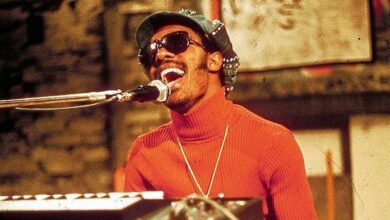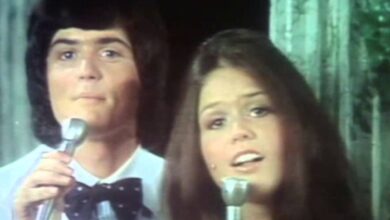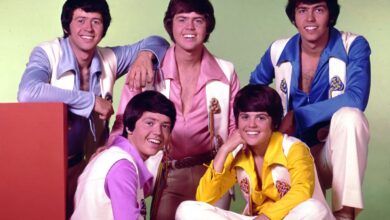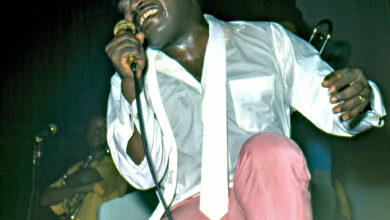Mary Hopkin’s ‘Those Were the Days’ – A Nostalgic Anthem That Defined an Era
When Those Were the Days was released in 1968, it became an instant sensation, launching the career of Welsh singer Mary Hopkin and cementing itself as one of the defining songs of the late 1960s. With its wistful lyrics, rich orchestration, and a melody rooted in Eastern European folk tradition, the song stood out amidst the psychedelic rock and emerging hard rock of the time. It soared to No. 1 on the UK Singles Chart and reached No. 2 on the Billboard Hot 100 in the United States, making Hopkin one of the most recognizable voices of the era.
Mary Hopkin’s journey to stardom was anything but conventional. Born in Pontardawe, Wales, in 1950, she grew up immersed in folk music, developing a gentle yet striking vocal style. Her big break came when she won the British talent show Opportunity Knocks in 1968. Her performance caught the attention of model and television personality Twiggy, who recommended her to none other than Paul McCartney. At the time, The Beatles had just launched their Apple Records label, and McCartney was scouting fresh talent. Hopkin became one of the label’s first signings, and her debut single would go on to be one of its biggest early successes.
The song itself had an intriguing history long before Hopkin recorded it. Originally a Russian folk tune titled Dorogoi dlinnoyu, it had been composed in the early 20th century by Boris Fomin, with lyrics by poet Konstantin Podrevsky. The melody carried a deep sense of longing and nostalgia, which translated seamlessly when American songwriter Gene Raskin rewrote the lyrics in English, transforming it into Those Were the Days. The lyrics told the story of youthful dreams, lost time, and the bittersweet passage of life—a theme that resonated universally.
The recording session was overseen by Paul McCartney, who served as the producer. McCartney, known for his meticulous approach to production, gave the song a grand, almost theatrical arrangement. The instrumentation blended traditional folk elements with orchestral flourishes, including a harpsichord intro that immediately set the nostalgic tone. Hopkin’s voice, pure and haunting, carried the song’s melancholic yet uplifting message with effortless grace.
Upon release, Those Were the Days took the music world by storm. It quickly climbed the charts, dethroning The Beatles’ Hey Jude from the No. 1 spot in the UK and selling over four million copies worldwide. The song’s cross-generational appeal made it a favorite not only among pop audiences but also with folk and older listeners who appreciated its timeless themes. Hopkin, a then-unknown teenager, was suddenly a global star.
Beyond commercial success, the song had a cultural impact that few could have predicted. At a time when the world was experiencing social upheaval—protests, counterculture movements, and a radical shift in popular music—Those Were the Days offered a sentimental reflection on the past. Its themes of youthful hope and later disillusionment resonated with listeners facing the turbulence of the late ‘60s. While rock music was charging forward into new experimental territory, this song looked back, reminding people of where they had come from.
For Mary Hopkin, the song was both a blessing and a challenge. It propelled her to international fame and led to follow-up hits like Goodbye (also written by McCartney), but it also became the standard by which all her future work was measured. Despite recording several well-received albums, she gradually stepped away from the spotlight, preferring a quieter life away from the pressures of fame.
Those Were the Days also left its mark on the music industry, influencing folk and pop crossovers in the years to come. Its success demonstrated that there was still a place for traditional folk-inspired songs in the evolving world of pop music. Many artists were inspired by its rich orchestration and storytelling quality, elements that later appeared in works by musicians such as Simon & Garfunkel and even early Elton John.
The song has been covered by numerous artists across different genres, from Dalida’s French rendition Le temps des fleurs to later interpretations by rock and folk artists alike. Sandie Shaw, Dolly Parton, and even Engelbert Humperdinck recorded their versions, each bringing their own distinct style to the melody. However, none could quite capture the same magic that Hopkin’s youthful and evocative delivery brought to the original.
At the time of its release, Hopkin found herself swept up in The Beatles’ orbit, performing on high-profile TV shows, attending industry events, and even appearing on The Ed Sullivan Show. However, the pressures of being in the music business so suddenly took their toll, and she eventually distanced herself from the commercial pop scene, later focusing more on folk music, which had always been her first love.
Decades later, Those Were the Days continues to be an enduring classic. It has been featured in films, television shows, and numerous nostalgia-driven compilations. The song’s universal message of looking back at the past with fondness yet acknowledging the inevitable changes of time ensures its lasting appeal.
Looking at the song’s broader legacy, it helped validate Apple Records as a legitimate music label in its early days, proving that the company could produce major hits outside of The Beatles. It also highlighted Paul McCartney’s production abilities beyond his own songwriting, demonstrating his knack for bringing the best out of artists.
In the years following her peak fame, Mary Hopkin remained active in music on her own terms. Though she chose a quieter career path, her impact on folk-pop music remained significant. Those Were the Days may have been her biggest hit, but it was also a defining moment in late-‘60s music, proving that a simple, beautifully crafted song could stand the test of time.
Even today, Those Were the Days evokes a unique sense of nostalgia and longing that few other songs can match. It remains a song that speaks to all generations—a reminder of youth, change, and the unshakable power of memories. For many, it is more than just a song; it is an experience, a journey back to a time when dreams felt limitless, and the world was full of possibilities.



